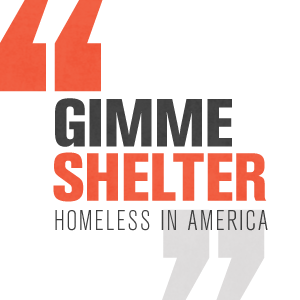Gimme Shelter: Homeless in America
A chronology….
1600: European colonists begin to arrive in the New World, America
1640s: homelessness was seen as a moral deficiency, a character flaw. If homeless in the 1600s, a person or family would come upon a town and would have to prove their ‘worth’ to the community’s fathers. If not, they would have to move on to the next town.
1729: Philadelphia passes a Law allowing locals to deport local homeless people.
1820s-‘30s: people began migrating from the farm to the city in search of jobs. Philadelphia and New York had many people walking the streets causing the country’s first pan-handling ordinances.
• 1820: New York passes a law that causes severe fine for homeless beggars.
FACT: City jails became de facto shelter systems.
The Panic of 1873: Start of a 6 year depression. Records show that people were found dead of starvation on the side of the street.
1889: Jane Adams founded the hull house providing shelter food and medical attention to the homeless.
1920s: The Great Chicago Fire, The San Francisco earthquake, the massive flooding of the Mississippi in the 1920s from Ohio through New Orleans displaced over 1.3 million people.
• Oct. 1929: Start of the Great Depression
1930s: The Drought in Oklahoma and Texas led to mass migration (to California) and homelessness.
1980: Federal government funds a $2 billion homeless assistance system, made up of emergency shelters, soup kitchens, transitional housing, and other programs that meet homeless people’s immediate needs.
1986: Millions of Americans participate in Hands Across America, forming a human chain across the country to raise funds for the hungry and homeless.
2011: Department of Housing and Urban Development (HUD) study: veterans are 50% more likely than other Americans to become homeless.
The U.S. Government has set a goal of ending veteran homelessness by the end of 2015.
Facts:
Over 7% of persons living in the U.S. have been homeless at some point in their lives
The homeless population increased in 2013 by 6% from 2012.
26% of homeless adults suffer from some form of mental illness.
There are 633,782 people experiencing homelessness on any given night in the US
Of that number, 239,403 are people in families, and 394,379 are individuals.
1 in 194: Over a year, the odds of experiencing homelessness
Collectively, urban areas have the highest rate of homelessness – about 29 people per 10,000 – and those areas classified as “mostly urban” rank second with a rate of 19 homeless people per 10,000. Rural areas have the next highest rates: 14 people per 10,000.
Who Are the Homeless?
• Families: become homeless as a result of some unforeseen financial crisis – a medical emergency, a car accident, a death in the family – that prevents them from being able to hold on to housing
12 million: number of renter and homeowner households that now pay more then 50 percent of their annual incomes for housing
• Youths: Young people often become homeless due to family conflict, including divorce, neglect, or abuse
There are approximately 550,000 unaccompanied, single youth and young adults up to age 24 who experience homelessness longer than one week in a year. 380,000 of those are under 18
• Veterans: Often become homeless due to war-related disabilities caused by their battlefield experiences. Physical injuries, post-traumatic stress and mental suffering are some after effects that drive the population of homeless veterans
62,000 or 13% of all homeless persons are veterans
• Chronic Homelessness: People experiencing chronic homelessness often end up living in shelters; they account for fewer than 16 percent of the entire homeless population
Why are people Homeless?
Two main trends are largely responsible for the rise in homelessness over the past 20-25 years: a growing shortage of affordable rental housing and a simultaneous increase in poverty.
• A family with a full-time worker making minimum wage could not afford fair-market rent for a two bedroom apartment anywhere in the U.S.
• Homelessness and poverty are inextricably linked. Poor people are frequently unable to pay for housing. There is a lack of affordable housing
• Eroding work opportunities
• Decline in public assistance funding
• Domestic violence
• Mental illness
The REAL cost of homelessness (to us all):
People experiencing homelessness are more likely to access the most costly health care services.
Four Days Longer: Average number of days homeless people spend more than comparable non-homeless people. Cost: $2,414 per hospitalization, is attributable to homelessness.
Prisons and Jails
People who are homeless spend more time in jail or prison, which is tremendously costly to the state and locality. Often, time served is a result of laws specifically targeting the homeless population, including regulations against loitering, sleeping in cars, and begging.
• Cost to taxpayers: $14,480 a year, primarily for overnight jail
• A typical cost of a prison bed in a state or federal prison is $20,000 a year
Emergency Shelter
Emergency shelter is a costly alternative to permanent housing. The cost of an emergency shelter bed funded by HUD’s Emergency Shelter Grants program is approximately $8,067 more than the average annual cost of a federal housing subsidy
But there is hope: Famous people who were once homeless (and where they lived)
• Oscar winner Halle Berry (shelter in New York City)
• Jim Carrey (lived in a car with his brother, sister, and parents)
• Charlie Chaplin (streets)
• Kelly Clarkson (shelter)
• Daniel Craig (park bench)
• Ella Fitzgerald (streets of Harlem)
• Jewel (car)
• David Letterman (his truck)
• Joan Rivers (car)
• Martin Sheen (New York Subway)
Sources:
http://moveforhunger.org/hunger-and-homelessness/?gclid=CIK8q_vuu7kCFcN9OgodtFAALA
http://msnbcmedia.msn.com/i/MSNBC/Sections/NEWS/z-pdf-archive/homeless.pdf
http://www.medscape.com/viewarticle/481800
http://www.dceh.org/the-history-of-homelessness-in-america-1640s-to-present/
http://www.endhomelessness.org/library/entry/2013-veteran-homelessness-counts-map
http://www.timetoast.com/timelines/homelessness
http://www.nationalhomeless.org/factsheets/why.html

